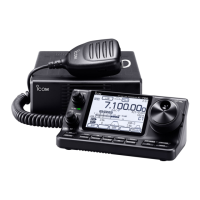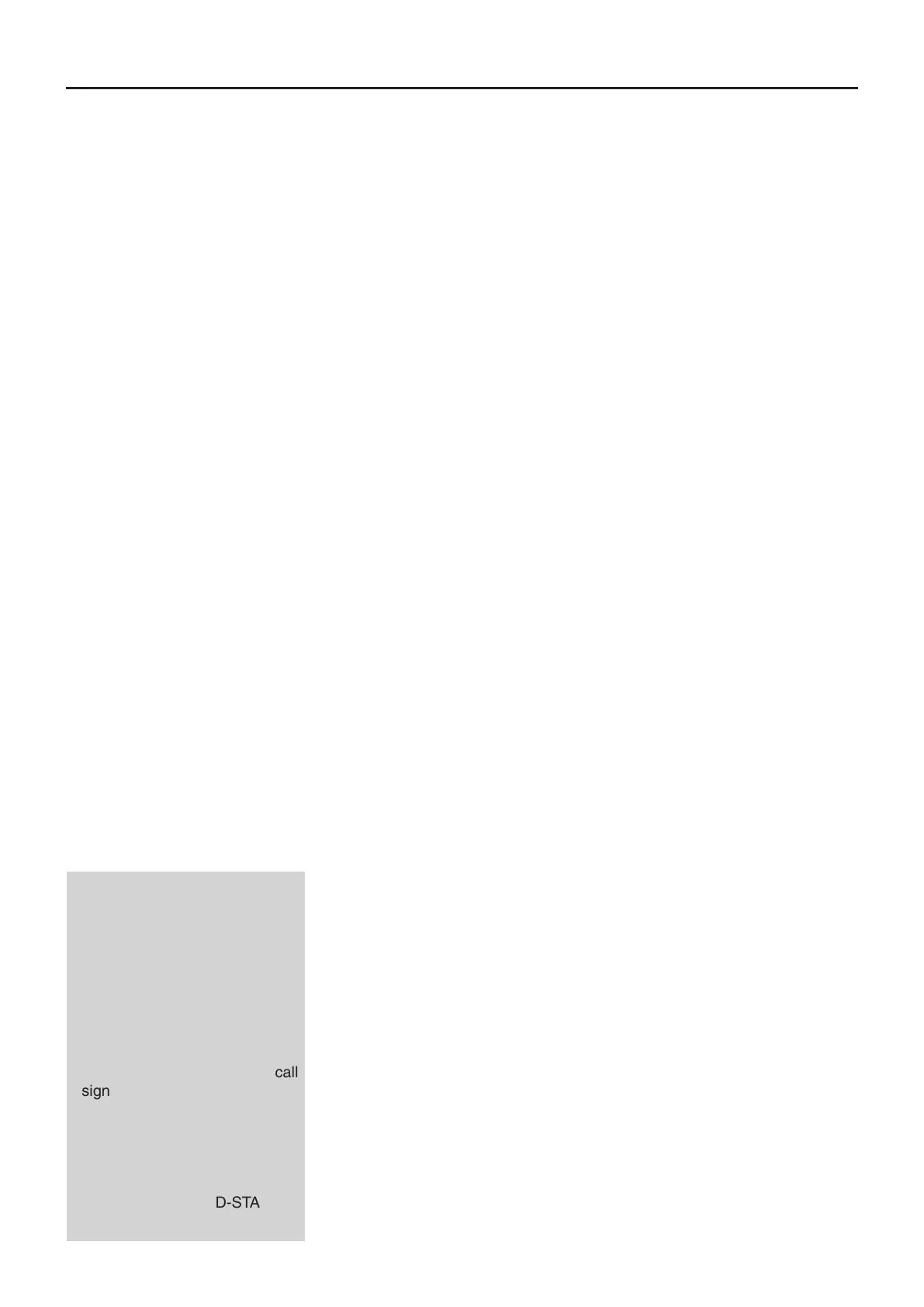9-1
Section 9
D-STAR OPERATION <ADVANCED>
9-1
IMPORTANT!
• The repeater list, described in
this manual, may differ from your
transceiver’s preloaded contents.
• Although Japanese repeat-
ers are used in the setting ex-
amples, the Japanese repeater
node (port) letters are different
from other country’s.
Be sure to add a repeater node
letter as the 8th digit in the call
sign field after a repeater call
sign, according to the repeater
frequency band, as shown be-
low.
1200 MHz: A (B in Japan)
430 MHz: B (A in Japan)
144 MHz: C (no D-STAR re-
peaters in Japan)
Message operation ..........................................................................9-2
TX message programming
D
.............................................................. 9-2
Message Transmission
D
.................................................................... 9-5
TX message deleting
D
...................................................................... 9-6
Received call sign viewing .............................................................9-7
View in the RX History screen
D
........................................................ 9-7
BK mode communication ...............................................................9-9
EMR communication .......................................................................9-10
Adjusting the EMR AF level
D
............................................................ 9-11
Display type setting .........................................................................9-12
DV automatic detection ...................................................................9-13
Automatic Reply function ...............................................................9-14
D Recording an Auto Reply voice announcement .............................. 9-15
Playing back the recorded voice audio
D
........................................... 9-15
Received Auto Reply Position Data
D
................................................ 9-16
Low-speed data communication ....................................................9-17
Connection
D
...................................................................................... 9-17
Low-speed data communication application setting
D
....................... 9-17
D Low-speed data communication operation ..................................... 9-17
Speech function ...............................................................................9-18
To announce the received call sign
D
................................................. 9-18
To announce the RX>CS call sign
D
.................................................. 9-19
Speech Language selection
D
............................................................ 9-20
Phonetic Code setting for the Speech alphabet character
D
.............. 9-20
Speech speed selection
D
.................................................................. 9-21
Speech level selection
D
.................................................................... 9-21
Digital squelch functions ................................................................9-22
The digital call sign squelch setting
D
................................................ 9-22
The digital code squelch setting
D
...................................................... 9-22
Digital code setting
D
.......................................................................... 9-23
Viewing the call signs .....................................................................9-24
Changing the Call sign setting .......................................................9-25
Simplex operation
D
........................................................................... 9-25
For Duplex (repeater) operation
D
...................................................... 9-26
Repeater list .....................................................................................9-28
Repeater list contents
D
..................................................................... 9-28
Repeater list programming .............................................................9-29
Required items for the communication cases
D
................................. 9-29
New repeater programming
D
............................................................ 9-29
Editing a repeater list ......................................................................9-38
Deleting a repeater list ....................................................................9-39
Rearrange the display order of the repeater .................................9-40
Adding the Repeater information using the RX History ..............9-41
Skip setting for the DR mode scan ................................................9-42
Individual skip setting
D
...................................................................... 9-42
Group skip setting
D
........................................................................... 9-42
Repeater group name programming..............................................9-43
Repeater detail screen ....................................................................9-44
Your (destination) call sign programming .....................................9-45
Editing a Your (destination) call sign .............................................9-47
Rearrange the display order of Your (destination) call sign ........9-48
Deleting Your (destination) call sign ..............................................9-49
Your setting is correct?...................................................................9-50

